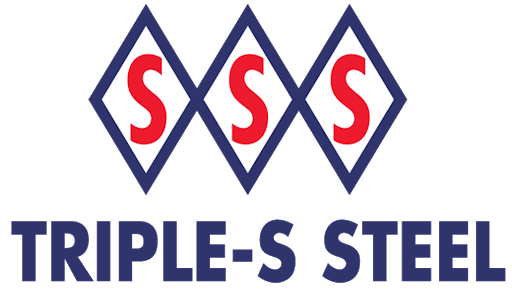



Supply chain issues have hit almost every industry since the pandemic began. According to the United States Census Bureau, around 60% of respondents in the manufacturing and construction sectors responded “yes” when asked if they had domestic supplier delays.
The steel industry felt and continues to feel the tremors in the supply chain. Constantly shifting demand, reopening of factories, and the need for qualified employees play a part in the shifting market.
Despite the uncertainty of the market, steel remains one of the best building materials available. Continue reading this post to learn more about steel, steel shapes, hollow sections, rectangular hollow section sizes, and more.
Of the various materials used on the Earth, steel is one of the most reliable and sturdy available. Known for its longevity and powerful composure, steel is a natural choice for building.
Whether you know it or not, steel is all around you. Every time you drive or enter a building, it’s likely that there’s steel around you. Structural steel comes in four main types. Each different type of steel offers various levels of flexibility and versatility.
The four types of structural steel are alloy steel, stainless steel, carbon steel, and tool steel. Alloy steel consists of many materials and is generally the most affordable although it varies widely in strength based on the other materials used in it.
Stainless steel, common in kitchen appliances and surgical equipment, consists of about 20% chromium and is highly resistant to corrosion. Carbon steel lacks shine but makes up about 90% of all steel production. Carbon steel is often used in automotive parts because of its strength. Last is tool steel. Tool steel is strong and hard, thus is often used for tools. It is heat resistant, versatile, and durable.
In addition to the four types, steel comes in many shapes. Each shape has different functions. With this in mind, steel options can work for essentially any project you have.
Here are some of the common steel shapes: angles, rebar, beams, channels, grates, pipes, plates, sheets, and coils.
Angle steel is commonly used to frame furniture, supporting structures, shelves, or walls. Rebar, short for reinforcing bar, strengthens masonry or concrete structures. Beams offer critical support in a structure. The “C” shaped steel channel supports walls, windows, and light-duty roofs. Steel grating forms platforms, walkways, stairs, and vents. Steel pipes are commonly used for the transportation of liquid or gasses. Plates are used in a variety of settings such as construction, military, shipping, automotive and more. Similar to plates, people use sheets in many industries like tools, agriculture, catering, medical, and electronics. Coils work in roof panels, power stations, walls, and more.
Another shape of steel, and the particular focus of this article, is hollow sections. Hollow sections are steel tubes used for bolted or welded construction of bridges, buildings, and other structures. They function as frames, columns, or breams when providing support.
Hollow sections come together in two main ways. In the first, a hole is punched through a hot solid bar. The bar is then molded to form a specific shape. The other process is a welded process. Steel strips are aligned and then welded into place to form the tube. These hollow sections are typically square, circular, or rectangle. When square or rectangular, they have heavily rounded corners.
Hollow sections are often chosen for their aesthetic appeal. Hollow sections have a smooth appearance and can be finished in a variety of ways. When framing or structure is showing, many builders opt for the style of the hollow section. Because the sections are hollow, they are much lighter than traditional beams but still have the strength to back up a larger build.
Rectangular hollow sections are a popular choice for structural, mechanical, and construction applications. The flat surface of the rectangle allows a structural solution that is economical for fabrication and joining work. Because of the rectangular shape of the hollow section, it only needs to be cut straight when it is joined to other flat surfaces. The edges require minimal preparation for joining or welding.
See our steel tubing & piping page for a full list of our sizes. Rectangular hollow section sizes vary in terms of thickness, dimensions of the rectangle, weight, and length of the section. The thickness of the steel is measured in BWG, or “Birmingham Wire Gauge”. This is convertible to inches or millimeters depending on your project.
As you approach a project, you likely will need a variety of steel products to get the job done. You could source your material from different vendors, but imagine the pain of keeping track of multiple orders with different companies.
You will save yourself time and a headache if you use an all-encompassing steel supplier like Intsel Steel West. In addition to saving you time, they save you money. They guarantee fixed pricing and next-day delivery. Gone are the days of stalling projects because your supplies got lost in transit. Know that your order will arrive exactly when you want it…even if you want it tomorrow.
Regardless of what you’ve got planned for your next build, you’re going to need steel to do it. Whether you need sheets, coils, or rectangular hollow section sizes from large to small, Intsel can supply them.
Request a quote today to get started on your next building dream.